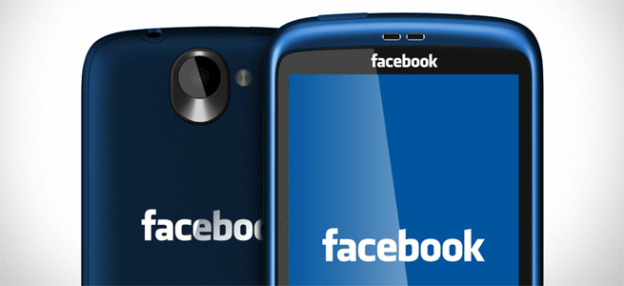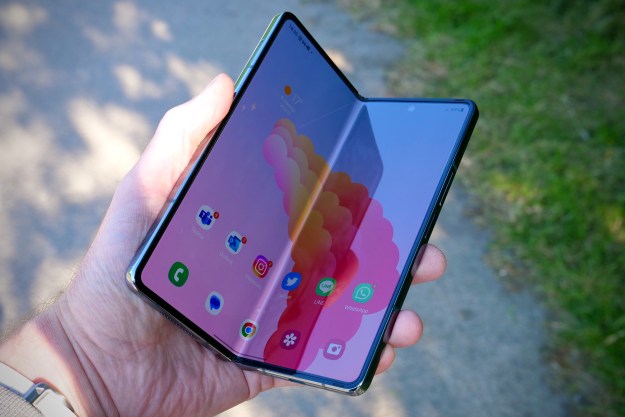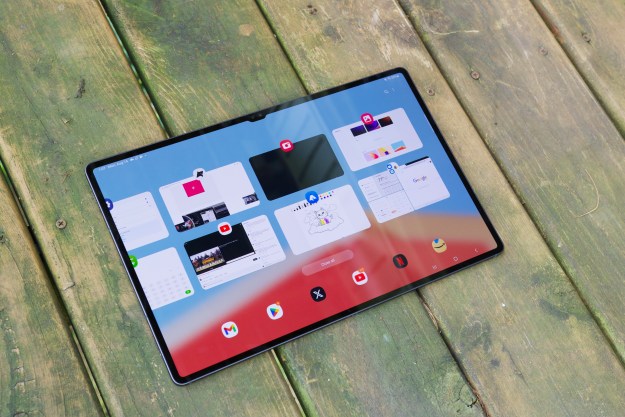
Now that Facebook has gone public and is busy counting its money (which, admittedly, is less than many expected), attention is turning to what Facebook might actually do with some of that cash. In the wake of the company’s $1 billion acquisition of Instagram last month, media focus is centering on other takeovers that could shore up Facebook’s notoriously lackluster mobile story. The company hasn’t exactly been resting on its laurels — it just rolled out its pre-Instagram Camera app and is gobbling up a selection of mobile-centric companies like Lightbox and Glancee.
Now, rumors indicate Facebook may be looking to acquire Norwegian Web browser maker Opera, perhaps as part of a broader move to launch its own Facebook phones — speculation that’s been circulating for years but has been bolstered by Facebook reportedly onboarding engineers from Apple’s iPhone team.
For Facebook, acquiring Opera wouldn’t be like acquiring something like Instagram, which is arguably defined an aspect of today’s mobile lifestyle — photo sharing. Fundamentally, Opera represents technology that is already baked into every smartphone platform on the planet — a Web browser. And it’s not a default Web browser for virtually any smartphone user. Why would Facebook be interested?
What is Opera?

However, Opera distinguished itself from other desktop browsers in another fundamental way: it always had its eyes set on mobile. No sooner had Opera spun off from Telenor than it started working on porting the browser to mobile devices. By 2000, Psion were using Opera as a default browser; by 2003, Opera Mobile was available for Symbian and Windows Mobile; and by 2006, Opera was making version for the Nintendo DS and Wii. Opera Mobile distinguished itself by trying to bring the full desktop Web experience to mobile devices: this wasn’t a watered-down WAP browser, but one with support for dynamic HTML, SVG graphics, CSS, and a plethora of real-world Web development standards. However, by 2007 Opera Mobile was starting to struggle: Opera Mobile 9 was announced, then erased from history. Opera 9.5 got skipped over. And Opera Mobile 9.7 didn’t appear until mid-2009, albeit with a major revamp to its rendering engine. Opera Mobile is still around: version 12 is currently available for Android, Symbian/S60, and Windows Mobile — along with the handful of Maemo and MeeGo devices out there.
So you’ll immediately notice what’s missing from that list of operating systems supported by Opera Mobile: Windows Phone. Oh! And a little thing called iOS. Both operating systems have strict sandboxing rules that limit what apps can do. On iOS, one of those restrictions forbids applications that include their own compilers or interpreters. That means third-party browsers can’t bring JavaScript engines to iOS — and that’s why neither Firefox nor Opera Mobile are available for the platform.
But Opera wasn’t quite caught flat-footed there either. Full-featured Web browsers that support JavaScript, DHTML, advanced graphics, CSS, and other technologies were beyond the capabilities of most mobile phones in the mid-2000s, so Opera started working on something called Opera Mini, initially solely as a project with Norway’s TV 2. Instead of functioning like a traditional Web browser by connecting to a remote Web server, downloading a page and related items (like images), interpreting them internally, and displaying them to the user, Opera Mini retrieves all content through proxy servers operated by Opera Software. Opera’s high-speed servers re-interpret the page for small screens and rewrite the data as OBML (Opera Binary Markup Language), then compress it and send it along to the user for display. (Amazon has taken a similar approach to Web browsing in the Kindle Fire’s Silk browser.) The result is that Opera Mini users never connect to the remote website directly (which is good for security). They also get a version optimized for their device, consume less data bandwidth than a normal browser (good for folks struggling with their data plans), and Opera Mini doesn’t have to include a JavaScript interpreter, which means Opera Mini is available for iOS.
Opera Mini is arguably Opera’s most successful product. The company still makes a (very elaborate and capable) desktop browser, but has always lingered in the low single digits of worldwide marketshare. (Surprisingly, though, it’s a leading browser in the Ukraine.) However, between Nintendo devices, Symbian feature phones with Opera Mini as the default browser, and significant success in markets like Indonesia and Russia, Opera Mini at one point could claim to be the most popular mobile browser on Earth—at least, until the iPhone, iPad, and Android devices exploded into the worldwide marketplace. Even still, data from NetMarketShare puts it at number three today, with a 12.05 percent share of the worldwide mobile browser market. That translates to about 150 million users.
The good
So — what about this is of any interest to Facebook? Doesn’t every smartphone platform on the planet come with a built-in Web browser? Facebook is a social networking platform — why would it want a browser of its own?
Most speculation on a potential Facebook acquisition centers on Facebook using Opera to bolster its mobile strategy — and, for better or worse, that means the interest is all about Opera Mini rather than Opera Mobile or the desktop browser. The basic logic is that, right now, Facebook’s mobile applications are essentially wrappers around the company’s Web-based services. When users load a photo gallery or news feed from a Facebook mobile app, they’re using the same services that produce those things for the Facebook website. After all, Facebook has invested major time, talent, and effort designing and scaling those services: leveraging that effort for mobile is a good fit for Facebook’s core engineering motto “Done is better than perfect.”
If Facebook were to acquire the technology behind Opera Mini, it would control both sides of the mobile experience: it could tailor the content from its services to specifically target a single mobile platform and control how that mobile platform responds to the content. In theory, this would enable Facebook to more-nimbly innovate and enhance its mobile experience without having to completely overhaul its backend services to better cope with mobile.
Furthermore, if Facebook got a hold of the compression and rendering technology behind Opera Mini’s proxy services, Facebook can make its mobile offerings more appealing to users. First, those services will seem faster in real time because they’re transferring less data to mobile devices: less data means less transfer time and more responsiveness. Second, in an era of mobile data caps, Facebook would consume less of users’ bandwidth allotments: checking in with Facebook would have less upfront cost, freeing people to check in more often.
But acquiring Opera wouldn’t be about making a better Facebook app. It would be about redefining mobile Web browsing.
A Facebook Web

The model here is probably something like UCWeb, which North American phone users have probably never heard of but it claims more than 300 million users worldwide, with an estimated 200 million in China. (A version is available for iOS and Android as well as Symbian, BlackBerry, and Windows Mobile.) At first glance, UCWeb is just a portal and a rather odd news aggregator on top of a Web browser — and bear in mind the English versions are still very young — but a recently-announced partnership with Evernote adds a new twist, enabling users to immediately save and share information while browsing the Web.
So: instead of firing up a generic browser and using generic features — bookmarks, search, URL bars, tabs, etc. — Facebook features would be both front-and-center and always available. Say you’re surfing the Web for information about a TV show: once you find it, perhaps you can swipe up from the bottom to pull up your Facebook friends list and share episode information with your Game of Thrones cronies immediately — no app switching, no tab switching, no awkwardness. Maybe swiping from the side opens your news feed, from the other side your photos, and from the top a bunch of in-browser Facebook controls or access to Facebook-based media and games. Folks would still be surfing the open Internet, but looking at it (and interacting with it) through a Facebook lens. And, of course, providing Facebook with ever more usage data and potentially-personal information for its profiling.
The bad

One day, we may look back on the initial explosion in smartphone popularity and conclude native apps were just a stopgap on the way to a truly mobile Web — companies like Google certainly hope so. Nonetheless, given a choice between a decent native mobile app and a conventional website, most people choose the app. As a result, many of the things Facebook users want to share — and what they’re already doing on their phones — are already outside the browser and tucked away into specific applications.
Furthermore, if the mobile world’s current fascination with apps proves to be a passing fad and mobile usage eventually re-orients around a Web model, that also works against a Facebook browser. Facebook may be the 800-pound gorilla on the social networking scene, but it’s far from the only game in town. If the mobile world truly orients around a Web-based model, that means common social interactions are also going to revolve around a Web-based model. Using a browser that’s specifically tied to Facebook is going to be interesting only to people who are so devoted to Facebook they don’t want to see outside its universe. People who aren’t on Facebook — or who are perhaps into Twitter, Google+, LinkedIn, or Pinterest — are going to prefer a generic browser — or one that can offer support for their preferred social services. A Facebook browser would become…just another app.


